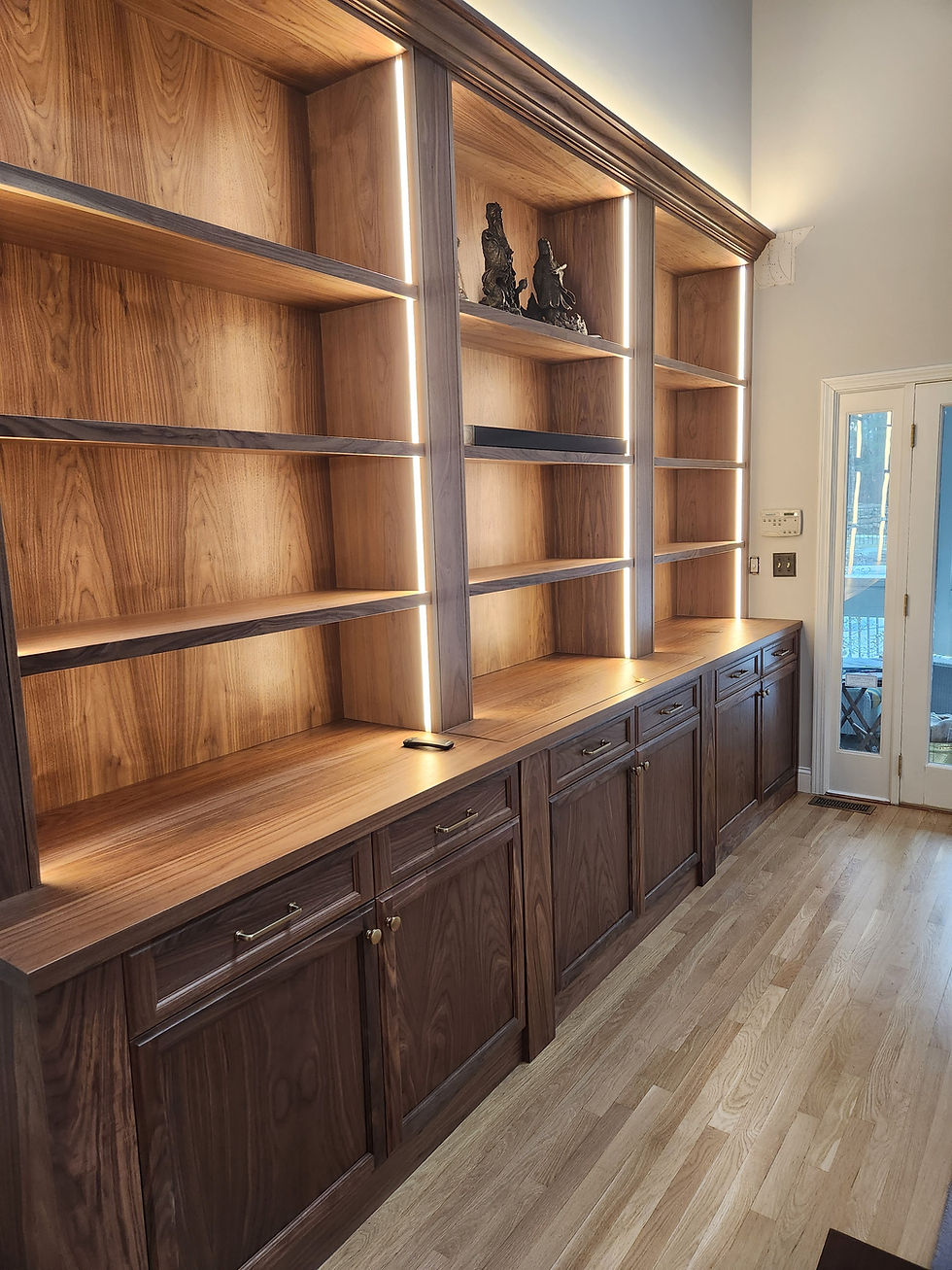Introduction to Cabinet LED Lighting
- Phil Blumberg
- Mar 16
- 3 min read
At Perris Woodworks, we use Tresco LED tape lighting. It is our preferred brand becasue their tape light is "continuous line" LED. This means you don't see individual diodes like you typically see with LED lighting; rather it's a continuous line of light. The tape light fits in a metal channel, called an extrusion, which is routed into the sides or bottom of a cabinet.

Understanding Color Temperature

Color temperature, measured in Kelvin (K), describes how light from a lamp appears. The scale typically ranges from 2700K to 6500K:
Warm White (2700K-3000K): Creates a cozy glow similar to traditional incandescent bulbs. Great for relaxed settings like living rooms or bedrooms, where warmth and comfort matter.
Neutral White (3000K-4000K): Offers balanced light that works well in versatile settings. Ideal for kitchens and dining areas, this temperature provides both comfort and clarity.
Cool White (4000K-5000K): Bright and crisp, cool white is effective for workspaces where focus is necessary. It reduces eye strain during tasks like reading or detailed crafting.
Daylight (5000K-6500K): This temperature mimics natural daylight. It is perfect for areas requiring clear visibility, such as display cabinets showcasing art or collectibles.
Factors to Consider
The Purpose of the Space
Assessing the function of the area is key. For instance, in a kitchen where cooking and socializing happen, a neutral color temperature of 3000K is often best. This level provides brightness for meal prep while still making the space feel inviting.
In contrast, a home office benefits from a cooler color temperature, like 4500K. Studies show that cooler lighting can improve focus by up to 30%, making it easier to concentrate on tasks for extended periods.
The Color Palette of Your Room
Your room's colors can influence your lighting choice. Warmer tones, such as soft yellows and browns, work well with warm white light, creating a snug atmosphere. For rooms painted in cooler tones like blue or gray, opting for a cool white or daylight light can actually enhance these colors, helping them pop and look more vibrant.

For example, a study revealed that 70% of respondents preferred cool lighting in blue-toned rooms due to the clarity it provided.
Choosing the Right Color Temperature for Different Spaces
Kitchen and Dining Areas
For kitchens and dining rooms, 2700k or 3000k are typically the most popular. This range not only improves food presentation but also complements various cabinet finishes. In these areas, it's important to strike the right balance between brightness for cooking tasks and a warm atmosphere for dining.
Living Rooms and Bedrooms
For areas meant for relaxation, such as living rooms and bedrooms, warm white lighting (2700K-3000K) is recommended. This range creates a welcoming environment, perfect for family gatherings or unwinding after stressful days.
Workspaces (Home Offices and Studios)
In productive environments like home offices or craft studios, aim for a color temperature in the range of 4000K to 5000K. This lighting promotes alertness and concentration, reducing fatigue during tasks that require focus, such as working on a detailed report or crafts.
Display Cabinets
When lighting display cabinets that showcase art or collectibles, consider using daylight bulbs (5000K-6500K). This color temperature accurately highlights colors and details of the items without any distortion, making everything look vibrant and appealing.
Summary
In summary, there is a wide range of color temperatures available to you that will impact how a space feels. Most of our clients lean towards the warmer temperatures (2700K-3000K), but cooler temperatures can look great with cooler colors like blue. They are also better for work spaces since they increase focus. At Perris Woodworks, we will help you select the color temperature that is just right for your space.




Comments